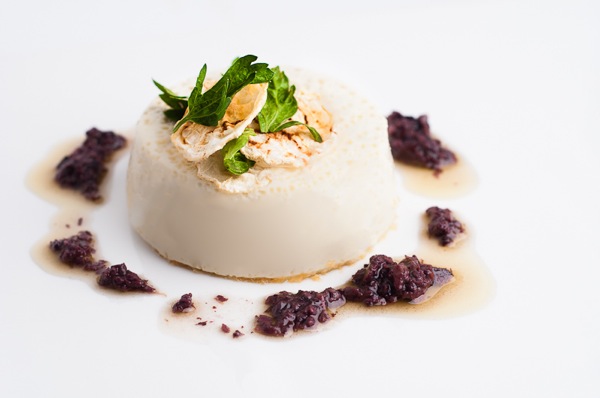Savory Cardoon Flan – Recipe

Savory Cardoon Flan
Cardoon: Looks like celery, tastes like artichoke.
Oxbow Farm is one of my favorite local farms. They are at several of our Seattle area farmer’s markets, and have a great educational center out in Carnation that is fantastic for taking city kids on field trips to learn where their veggies come from. Last time we were out there, the kids played hide and seek wearing rhubarb leaf hats, nibbled on peas, rescued a bird egg and ate lunch in a greenhouse.
Oxbow sent me one of their CSA boxes this week and laid down a challenge: show us something fun to make with all of these Fall vegetables. I was immediately attracted to the cardoon because I haven’t had the opportunity to work with it before. You’ll rarely see it in stores, but stalk your local farmer’s market the next few weeks and you might track some down. Stalk, get it? Haha, I made a funny.
So indeed, cardoon is in the same family of thistles as the more familiar globe artichokes. Before you cook a cardoon, you must first remove the strings from the stem, just like you would with celery. You can easily see the ribs on the outside of each stalk, so just dig a fingernail or paring knife under each one and pull and they come right up. Then you should soak it in salt water for a little while to reduce any bitterness, with a bit of lemon juice to prevent browning.
Cardoons are often served in a gratin with béchamel, or battered and fried (which, automatically is going to be delicious.) I thought I’d go in a slightly different direction and infuse the delicate flavor into milk and cream to make the savory flan you see above. I served it with some turnip chips (made in the same way as these burdock chips), parsley, and a quick puree of kalamata olives with olive oil and lemon zest, but you could go in other directions – any flavor that works with artichoke will go equally well with cardoon.
I’ll be back next week with one more dish made from my Oxbow box – a winter minestrone that got its wires crossed with borscht.
Savory Cardoon Flan
Vegetarian, gluten free and kosher
Makes 4 individual servings
- 1/2 pound cardoon (about 2 stalks)
- 1 tablespoon butter
- 1 cup heavy cream
- 1 1/2 cups whole milk (plus up to 1/2 cup more)
- 4 cloves garlic, peeled
- 1 ounce grated Parmigiano-Reggiano
- 1/4 teaspoon kosher salt
- Pinch of nutmeg (freshly grated if possible)
- 4 eggs
- Fill a bowl with water. Add a tablespoon of salt and the juice of 1/2 lemon. Trim off any ugly parts of the cardoon, remove strings as you would for celery, cut into 1/4″ slices and soak in the salted and acidulated water for 30 minutes.
- Butter 4 ramekins and preheat oven to 350 F.
- Bring the cream and milk to a simmer in a small saucepan. Add cardoon, garlic, cheese, salt and nutmeg to the cream mixture. Return to a simmer and cook, stirring occasionally, until the cardoon is completely tender, about 30 minutes. Allow to cool and infuse for ten minutes, then puree very thoroughly (using proper blender safety methods with hot liquids – see owners manual!). Strain through a fine sieve, pushing down to extract as much liquid as possible.
- Measure the amount of liquid you have, and if it is less than 1 3/4 cups, add milk to bring it up to that measurement. Taste and adjust seasoning; it will probably need more salt and possibly more nutmeg.
- Bring a kettle of water to a boil. Beat the eggs in a medium bowl, then whisk continuously while adding the cream mixture. Place the ramekins in a casserole to hold the water bath. Divide the custard among the 4 prepared ramekins and place on a middle rack of the oven. Pour the boiling water into the casserole about half-way up the side of the ramekins.
- Bake until just set; a toothpick inserted in the center should come out clean, about 25 minutes. Carefully remove the ramekins with tongs (you can take the water bath out later when it has cooled, I don’t want you splashing boiling water on yourself.) Cool ramekins on a rack for about 15 minutes, then use a knife to release the custard and invert onto serving plates.

So interesting! I’ve never seen this vegetable but I am certainly intrigued. I also appreciate you going the non tradition route; I think you’ve highlighted the versatility of the ingredient!